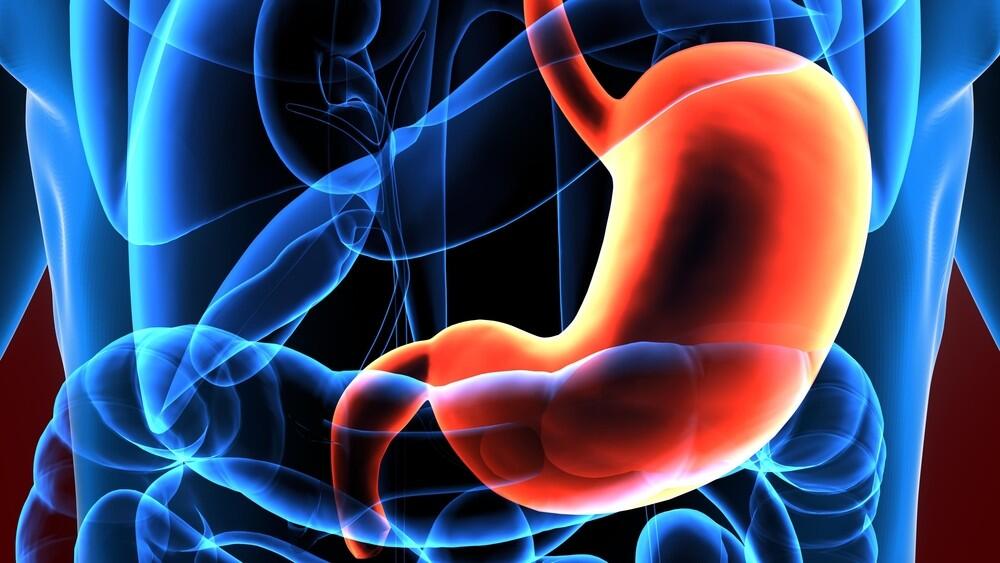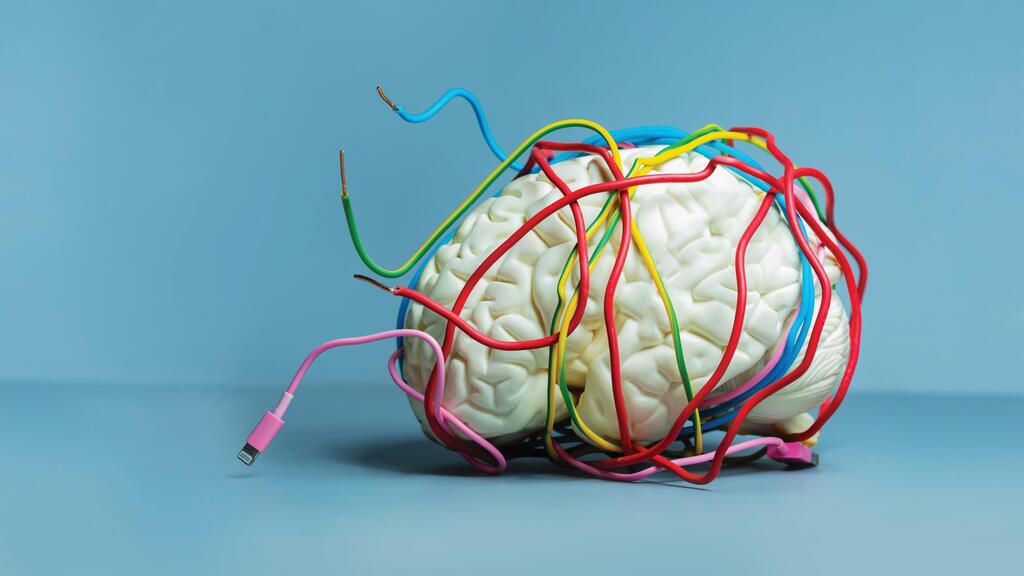In the past, men used to go to the tailor to have their suit fitted. They would choose their fabric preference, come to a few fittings and then would enjoy the final product. Now imagine that a man’s life partner needs a suit as well.
Will he ask the tailor to use his own measurements, reduced by 30 percent and sew an identical suit, without any additional fittings? Is it reasonable for most women’s suits to be sewn based on men’s measurements? It may sound ridiculous, but this is exactly what is still happening in modern medicine.
The majority of research on drugs and diseases is carried out on men, and the results are applied to both men and women.
If the differences between the sexes were limited to the reproductive systems and body weight, no significant problem would have arisen. But that is not the case. In practice, functional differences between men and women exist in nearly all body systems. The differences are sometimes small, but they are nonetheless important and affect health and disease.
The same diseases can appear with different frequency and with different symptoms in men and women; the same treatment, given to treat the same exact disease, can have different effectiveness for a woman or a man and the intensity of side effects may also be different.
Gender- and sex-conscious medicine, or in short ’Gender Medicine’, deals with these issues. The field inherently deals with improving the quality of medicine for both sexes, however in the present article we will focus primarily on its implications for the medical treatment of women.
Whether we become male or female is determined biologically by our sex chromosomes and is usually binary. In contrast, our gender identity as a man, a woman or as a non-binary individual is a subjective or social matter with a wide range of variations. Biological sex and gender are inextricably intertwined and this fact is of utmost importance to the way our body functions in health and disease.
Women differ from men not only genetically and biologically, but also usually in height, weight and almost always in the ratio between body components. Men and women are subject to different hormonal effects, starting from the fetal stage and continuously throughout life.
Women have a monthly menstrual cycle, they can go through pregnancies and lactation periods, as well as experience menopause – the equivalent of which also exists in men, but is much rarer. In addition, many phenomena and diseases, both physical and mental, are affected by the menstrual cycle.
For example, surgical wounds heal better in women who are in their first half of their menstrual cycle, while during the second half, the pain threshold is higher.
As a general rule, women experience pain differently compared to men. Their pain threshold is usually lower, but they are better equipped to deal with pain and react differently to different analgesics. In addition, chronic pain diseases are much more common in women. A migraine, for instance, is a phenomenon experienced by 17 percent of women, compared with only 6 percent of men.
Fibromyalgia – a disorder characterized by musculoskeletal pain – is about nine times more common in women than it is in men. There are also gender related differences. Women sometimes communicate pain differently than men, and society, including the medical establishment, tends to relate differently to female pain and to male pain.
A particularly important issue are the differences in the function of medications in men and women. The action of drugs in our body is highly dependent on the way in which they dissolve and disperse throughout our body’s tissues, namely in water, fat or muscle, as well as on the efficiency with which our metabolic systems process them and expel them from the body.
In this field, termed pharmacokinetics, differences exist between men and women. Take a man and a woman, both in excellent physical shape and an identical body weight of 75 kg, the man’s muscle mass will be greater by about 20 percent, while the woman will have almost twice as much fat tissue as the man.
Despite this, most medications today are sold at an identical dosage for both sexes, and in the vast majority of cases body weight is not even accounted for. Where did this come from?
Since its establishment, the FDA (Food and Drug Administration) has approved approximately 1,500 new drug components. Only about a third of these were approved after the year 2000, when the FDA began to fund only clinical research in which treatments were also tested in women. In other words, most of the drugs in use today may have never been tested in women.
The ignoring of women in clinical trials was not necessarily due to deliberate discrimination. It had a lot to do with two medical disasters that occurred in the middle of the 20th century.
First, in the 1950s, a significant increase in malignant tumors was detected in the genitals of children of women who during their pregnancy had taken a medication prescribed to prevent bleeding - Diethylstilbestrol (DES) – a synthetic form of the female hormone estrogen.
About ten years later another disaster occurred, when pregnant women who had taken the anti-nausea drug Thalidomide gave birth to children with severe limb deformities and a 40 percent infant mortality rate.
Following these events, the FDA issued a warning in 1977 not to include women in clinical trials, to prevent possible harm to fetuses. Although the warning was only with respect to women of childbearing age, drug manufacturers and many independent researchers have altogether given up the inclusion of women in their trials.
The fact that studies on women tend to be more complicated and expensive due to their more complex hormonal system also contributed to this.
Despite the many efforts invested since by decision makers and medical and research establishments, this distortion has not been adequately corrected to date. And if that is not enough, it turns out that many women are not particularly keen on participating in clinical trials.
Most medications are taken orally and are absorbed in the digestive tract. The differences between sexes are already observable here, since the time required for substances to pass through the digestive tract is significantly longer for women than it is for men. This fact is first and foremost important for food digestion, but it is also important for the absorption of medicines.
So here’s a small tip: when the instruction is to take a certain medication on an empty stomach, it is recommended for women not to be content with waiting the customary two-hour fasting period, but to wait an extra half hour to an hour between the last meal before taking the medication.
The differences in the digestive system between men and women are manifested in many ways. Irritable bowel syndrome (IBS), for example, is four times more common in women and some medications used for the treatment of the syndrome affect men and women a bit differently.
Gallstones are four times more likely to develop in women, especially during periods such as pregnancy, in which the level of the estrogen hormone increases. Duodenal ulcers are twice as common in men, while ulcerative inflammatory diseases, such as Crohn's disease and ulcerative colitis, are 1.5 times more common in women.
The composition of gastric juices is also different for men and women. For example, the levels of the enzyme that metabolizes alcohol even before it enters the bloodstream, are five times higher in men, which is why women get more intoxicated than men from the same amount of alcohol.
Much like alcohol, certain medications are degraded faster in the stomach in men. Examples are the sedative Diazepam, Imipramine which is used to treat depression, and Propranolol which is used to reduce blood pressure. In practice, this means that in order to reach a similar level of these medications in the blood, women need a lower dosage, or may suffer from stronger side effects.
The most important processes of drug metabolism are those that occur in the liver. In laboratory experiments, it was discovered that women's liver cells are more sensitive to the damage caused by acetaminophen (paracetamol) as well as by several other drugs, compared with men’s liver cells.
In addition, the first stage of metabolism in the liver is about 50 percent more efficient in women, as is the case for the antipsychotic drug Haloperidol. In contrast, the second stage of metabolism, which is also carried out in the liver, is more efficient in men, as exemplified by paracetamol.
In addition, a difference between the sexes exists in the efficiency of elimination of certain medications from the body through the kidneys: in women, this function is about 10 percent slower compared to men. This is the case with the elimination of the drug Digoxin, prescribed for the treatment of heart disease.
Since most medications have been studied only on men, a grim situation has arised. It is obvious that women often receive inappropriate dosages of medication, even if their body weight is accounted for.
In a review of 5000 studies that examined the properties of medications, it was found that 76 out of the 86 medications reviewed elicited negative side effects in women. Taking into account the pharmacokinetic differences between the sexes, there is a 96 percent correlation between them and side effects in women, compared to a mere 29 percent correlation in men. These differences cannot be explained by differences in body weight.
The current situation, in which men and women are prescribed the same medications at the same dosage, which in most cases is not even adjusted to body weight, is clearly unreasonable. This may be one of the reasons why women who take medications experience nearly twice as many side effects as men.
Side effects are no small matter. About 5 percent of unplanned hospital admissions are related to side effects of medications. Beyond the physical and mental pain they cause, side effects may cause patients to temporarily or permanently stop taking the medication. This impairs the efficiency of treatment and poses a health risk.
The first revolutionary step to solve the problem was undertaken in 2013, when the FDA recommended that drug manufacturers reduce by 50 percent the dosage of Zolpidem, a medication against insomnia, when prescribed to women, irrespective of their body weight. A similar instruction was given a year later for Flurazepam, also used for treating insomnia.
In order to better understand the consequences of the differences between the sexes with regard to medical conditions, we will turn to the brain: the most essential difference is that males and females carry a different set of sex chromosomes in their cells.
Almost every cell in our bodies is assigned a sex – either male or female, depending on the two sex chromosomes it carries. Since genetic composition serves as a roadmap for all cells in our body, a difference in the genetic makeup is expressed in the form of a difference in the functioning of the cells and the systems in which they reside.
In addition, already in the womb, the male and female brains develop in completely different hormonal environments. The differences between the sexes are evident in the size of the brain, the composition of the cells in the brain and their organization, in the connection between the cells as well as in the functioning of specific cell groups.
The brain continues to develop after birth, and is continually affected by the environment, the gender and the expectations and definitions that society has for each gender. All of the above have developmental consequences that lead to differences in cognition, behavior and function.
For example, the hypothalamus is an area in the brain that controls many basic functions, such as eating and sleeping, as well as the functioning of the ovaries and testicles. In a human female, the hormonal stimulation of the ovaries is pulsatile, which is why a woman has a monthly menstrual cycle.
In a male, the secretion of hormones that stimulate the testicles is nearly constant, which is why the production of sperm cells continues pretty much incessantly. The male and female hypothalamus may look identical and secrete the same exact hormones – but their pattern of activity is different, and consequently, the way the gonads function is also different.
Another example are the lungs: they are more vulnerable in women than in men, so much so that the risk of a female smoker to develop lung cancer is double that of a man who smokes a similar amount of cigarettes.
Cardiovascular diseases may also manifest differently in men and women. The classic signs of a heart attack are well known, but about a fifth of all women who suffer from a heart attack present with very different symptoms, which may include stomach or chest pains that develop slowly and do not radiate to the left shoulder and arm, but rather to the neck and chin.
If the woman and the people around her, or the medical staff, cannot attribute these symptoms to a heart attack, the diagnosis may be delayed, and thus likewise the treatment.
The consequences of this could be fatal. In the developed world, more women die each year from cardiovascular disease than from all types of cancer combined. Furthermore, even after a heart attack has been already diagnosed, women often receive inferior care compared to men under the same circumstances.
This outrageous fact has no other plausible explanation except misogyny. In Israel the data is in fact much more encouraging, both with regard to treatment outcome to the equality in the treatment provided to male and female patients.
Differences between the sexes develop long before birth. Beyond the difference in the genetic makeup of the cells of both sexes, the hormonal environment in the womb in which they develop is also very different. As a result, their development is different.
Furthermore, factors affecting the pregnant woman may also reach the fetus, sometimes in an increased form, depending on the sex of the fetus. This is true regarding the mother’s diet, environmental toxins, alcohol, smoking, and stress. This is the basis of a process in mammalian development termed “fetal programming”.
The COVID-19 pandemic is also worth mentioning in this context. The pandemic has brought on an alarming three-fold increase in the prevalence of depression, reaching 22 percent in men and 33 percent in women. The prevalence of stress and PTSD have also increased, but with no discernible difference between the sexes.
Mental stress and depression during pregnancy can also affect the fetus. This can be observed in hindsight when studying the aftermath of large past disasters: it was found that children of pregnant women who had lived under continuous or severe stress had a significantly higher chance of developing a wide range of disorders, including mental illness, throughout their lifetime. This was more evident in girls and women.
An important research study that was carried out in Jerusalem, on about 90 thousand subjects, including people who were in their mother's womb during the Six Day War in 1967, during the Yom Kippur War (1973) or during periods of calm.
Schizophrenia was significantly more prevalent in children of mothers who were pregnant during wartime, compared to children born to mothers who were pregnant during times of peace. Girls whose mothers were pregnant during wartime were 4.3 times more likely to develop schizophrenia as opposed to boys, whose risk increased only 1.2-fold.
Tamar Wainstock and her colleagues from Ben-Gurion University studied two groups of pregnant women from similar socioeconomic backgrounds who gave birth during the same time period at the same medical center.
One group included 1,846 women living in the “Gaza envelope” who were exposed to rocket fire and to frequent and sudden “Red Color” air raid sirens during their pregnancy. The 2,275 women in the second group lived at an aerial distance of 5-25 kilometers from the border with the Gaza Strip and were not exposed to air raid sirens.
The children of the first group were, on average, born after a shorter pregnancy, with a lower birth weight, and with a smaller head circumference. The differences were statistically significant for baby girls, but not baby boys.
Natural disasters have similar effects. The COVID-19 pandemic, accompanied by home isolation, physical distancing, the spread of false information and its amplification on social media, have all brought on an increase in the rates of mental stress and depression pregnant women were exposed to, which also affected their fetuses.
Naturally, not all fetuses were exposed to such situations in the mother’s womb during the pandemic, and not even most of them, but rather a larger than usual proportion.
This should suffice to compel us to prepare for the possible mental consequences of the pandemic for those who became pregnant or were born during the pandemic. Mothers need all possible protection and support, for their benefit as well as for the benefit of their fetuses, in order to prevent – or at least mitigate – the potential psychological damage.
This is not a done deal and many things can be done in order to make it easier for mothers to cope with this period of crisis. Only after recognizing the facts and the risks, is it possible to prepare for them and take measures to protect against them.
Such measures include, among other things, the distribution of organized and fact-checked information, a balanced diet for the mother, physical activity, social support for the pregnant woman, decrease of pressure at work and at home, formation of support groups, avoidance of toxins and close monitoring of medical treatments.
All these could positively affect the fetal programming. In addition, the environment that the mothers and children are exposed to after birth should also be taken into consideration.
Prenatal care, postnatal monitoring services in Israel are indeed very good, but they are also in need of further upgrade, which will include raising public awareness and the awareness in the medical system to fetal programming.
Only if we acknowledge that the treatment of a pregnant woman concerns at least two people – the woman at present, as well as the future of her fetus or fetuses – will we realize how great of a responsibility we have to provide the mother and her fetus with protection, support and assistance. This is truer than ever during times of economic and medical crises such as during the period of the COVID-19 pandemic.











